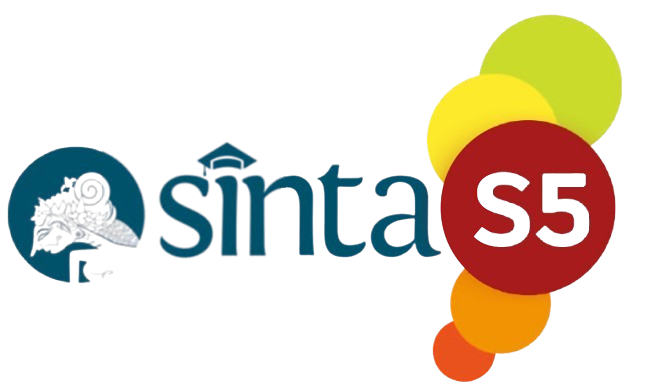Penerapan Monitoring Beban Latihan Berbasis Digital pada Sub-Elite Atlet Malaysia
DOI:
https://doi.org/10.33557/11mwxw67Keywords:
monitoring beban, atlet, digital, kepelatihan olahragaAbstract
Monitoring beban latihan merupakan elemen penting dalam proses pembinaan atlet untuk meminimalkan risiko cedera, mencegah maladaptasi, dan memastikan efektivitas program latihan yang diberikan. Era digital memberikan peluang untuk melakukan monitoring beban latihan dengan cara yang lebih cepat, murah, dan mudah diakses. Kegiatan PKM ini bertujuan untuk menerapkan sistem monitoring beban latihan berbasis digital pada sub-elite atlet Malaysia dengan menggunakan Google Form dan Google Sheets sebagai instrumen pencatatan dan visualisasi data latihan. Metode pelaksanaan terdiri dari identifikasi masalah, perancangan formulir digital, pendampingan penggunaan, dan evaluasi pelatihan selama dua bulan. Formulir berisi data denyut nadi maksimal, intensitas latihan (RPE), kualitas tidur, stres, suasana hati, kelelahan, serta menu latihan. Hasil kegiatan menunjukkan tingkat partisipasi atlet dalam pengisian data mencapai kategori sangat baik, dan pelatih mampu melakukan evaluasi mingguan berbasis grafik yang terbentuk secara otomatis dalam Google Sheets. Sistem ini mempermudah pelatih dalam menginterpretasi respons latihan, mendeteksi kelelahan, dan menyesuaikan beban latihan secara individu. Penerapan sistem monitoring digital ini terbukti efektif, hemat biaya, mudah diterapkan, dan dapat direplikasi di institusi olahraga lainnya. Selain memberikan manfaat praktis bagi pelatih dan atlet, kegiatan ini juga memperkuat kolaborasi internasional antara UNESA dan Majlis Sukan Wilayah Persekutuan Malaysia dalam pengembangan sport coaching berbasis data.
References
Ariza-Vargas, L., López-Bedoya, J., Domínguez-Escribano, M., & Vernetta-Santana, M. (2011). The Effect of Anxiety on the Ability to Learn Gymnastic Skills: A Study Based on the Schema Theory. Sport Psychologist, 25, 127-143.
Bourdon, P. C., Cardinale, M., Murray, A., Gastin, P., Kellmann, M., Varley, M. C., Gabbett, T. J., Coutts, A. J., Burgess, D. J., Gregson, W., & Cable, N. T. (2017). Monitoring Athlete Training Loads: Consensus Statement. International journal of sports physiology and performance, 12(Suppl 2), S2161–S2170. https://doi.org/10.1123/IJSPP.2017-0208.
Foster C. (1998). Monitoring training in athletes with reference to overtraining syndrome. Medicine and science in sports and exercise, 30(7), 1164–1168. https://doi.org/10.1097/00005768-199807000-00023.
Gabbett, T. J., Nassis, G. P., Oetter, E., Pretorius, J., Johnston, N., Medina, D., Rodas, G., Myslinski, T., Howells, D., Beard, A., & Ryan, A. (2017). The athlete monitoring cycle: a practical guide to interpreting and applying training monitoring data. British journal of sports medicine, 51(20), 1451–1452. https://doi.org/10.1136/bjsports-2016-097298.
Glasgow P. (2017). Optimising load to optimise outcomes. British journal of sports medicine, 51(13), 985. https://doi.org/10.1136/bjsports-2017-098048.
Hamlin, M. J., Wilkes, D., Elliot, C. A., Lizamore, C. A., & Kathiravel, Y. (2019). Monitoring Training Loads and Perceived Stress in Young Elite University Athletes. Frontiers in physiology, 10, 34. https://doi.org/10.3389/fphys.2019.00034.
Impellizzeri, F. M., Marcora, S. M., & Coutts, A. J. (2019). Internal and External Training Load: 15 Years On. International journal of sports physiology and performance, 14(2), 270–273. https://doi.org/10.1123/ijspp.2018-0935.
Meeusen, R., Duclos, M., Foster, C., Fry, A., Gleeson, M., Nieman, D., Raglin, J., Rietjens, G., Steinacker, J., Urhausen, A., European College of Sport Science, & American College of Sports Medicine (2013). Prevention, diagnosis, and treatment of the overtraining syndrome: joint consensus statement of the European College of Sport Science and the American College of Sports Medicine. Medicine and science in sports and exercise, 45(1), 186–205. https://doi.org/10.1249/MSS.0b013e318279a10a.
Piedra, A., Caparrós, T., Vicens-Bordas, J., & Peña, J. (2021). Internal and External Load Control in Team Sports through a Multivariable Model. Journal of sports science & medicine, 20(4), 751–758. https://doi.org/10.52082/jssm.2021.751.
Rago, V., Brito, J., Figueiredo, P., Krustrup, P., & Rebelo, A. (2019). Relationship between External Load and Perceptual Responses to Training in Professional Football: Effects of Quantification Method. Sports (Basel, Switzerland), 7(3), 68. https://doi.org/10.3390/sports7030068.
Scanlan, A. T., Wen, N., Tucker, P. S., & Dalbo, V. J. (2014). The relationships between internal and external training load models during basketball training. Journal of strength and conditioning research, 28(9), 2397–2405. https://doi.org/10.1519/JSC.0000000000000458.
Scott, B. R., Duthie, G. M., Thornton, H. R., & Dascombe, B. J. (2016). Training Monitoring for Resistance Exercise: Theory and Applications. Sports medicine (Auckland, N.Z.), 46(5), 687–698. https://doi.org/10.1007/s40279-015-0454-0.
Scott, B. R., Lockie, R. G., Knight, T. J., Clark, A. C., & Janse de Jonge, X. A. (2013). A comparison of methods to quantify the in-season training load of professional soccer players. International journal of sports physiology and performance, 8(2), 195–202. https://doi.org/10.1123/ijspp.8.2.195.
Vanrenterghem, J., Nedergaard, N. J., Robinson, M. A., & Drust, B. (2017). Training Load Monitoring in Team Sports: A Novel Framework Separating Physiological and Biomechanical Load-Adaptation Pathways. Sports medicine (Auckland, N.Z.), 47(11), 2135–2142. https://doi.org/10.1007/s40279-017-0714-2.
Windt, J., & Gabbett, T. J. (2017). How do training and competition workloads relate to injury? The workload-injury aetiology model. British journal of sports medicine, 51(5), 428–435. https://doi.org/10.1136/bjsports-2016-096040.
Downloads
Published
Issue
Section
License
Copyright (c) 2025 Irmantara Subagio, Nurhasan, Toho Cholik Muthohir, Dwi Cahyo Kartiko, Gigih Siantoro, Achmad Widodo, Taufiq Hidayat, Mokhamad Nur Bawono, Awang Firmansyah, Adi Pranoto

This work is licensed under a Creative Commons Attribution 4.0 International License.











